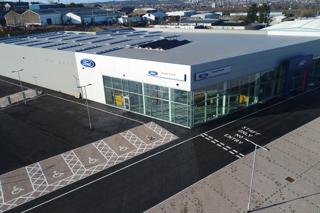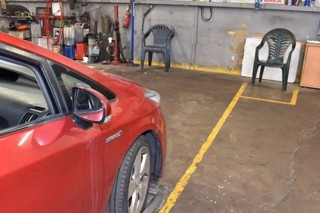Author: FITCH design director Mike Baird.
The fears that came with the rise of eCommerce are being realised in the automotive industry, as visits to European car dealerships are suffering a widely reported decline. Buyers are making one or two visits at most, because they gain so much information from an online knowledge-base that dealership visits become a final-stage formality. What’s worse? Retailers are failing to capitalise on even that interaction.
If dealerships are to remain relevant they need to provide an experience that caters for time-poor visitors who already have all the facts at their fingertips. To provide something more compelling than consumers already know, car brands must engage and entice their audience. By embracing new technology and understanding the modern consumer lifestyle, dealers can overhaul their retail strategies for the better.
Why aren’t today’s dealerships working?
The automotive industry is one of the last sectors to embrace what is now a well understood trend for most other retailers. With the ubiquity of information online, consumers are in a position to research just about anything they like, including reviews and detailed product specifications. All this independent and convenient opinion-forming leaves a showroom visit right at the end of the purchase path, at which point it’s useful for little more than verifying consumers’ decisions.
Numerous retail sectors raced to digital platforms, and many are still forging ahead to improve a seamless user experience across their online channels and physical presences. Meanwhile, the car industry is still known for those sprawling forecourts in out-of-town locations, and doesn’t recognise that potential customers will not make the time and effort to visit them for a hard sell and a dubious looking cup of coffee. Even online, manufacturer websites suffer from poor navigation and unclear information: it seems obvious that what they really want is to bring you into their space, where the salesman is in control.
What’s the solution?
Dealerships need to take themselves to the customer. As forward-thinking car brands respond to time-starved modern lifestyles, the test drive with a 75% 'buy rate' will come to you. Brands such as Tesla are taking their brand to high footfall shopping centres and high streets, while Fiat is using technology in its Brazilian Fiat Live Store to enable one-to-one consultations without the customer even leaving home: online tours of vehicles are streamed from consultants wearing head-mounted cameras.
Innovative brands are also reconfiguring the physical showroom to create more contemporary, welcoming environments which do away with traditional views of the car dealership (and even the role of the car at all!). Lexus’ Intersect space in Tokyo, for example, focuses less on the vehicles and showcases the premium Lexus lifestyle, from food to fashion.
These are examples of easily accessible retail spaces where the customer can fully experience the brand. The traditional, slick-suited salesman incentivised to deliver the hard sell is making way for more attentive and approachable assistants who can foster a relaxed dialogue and help support a longer-term relationship that, importantly, extends beyond the purchase.
Slowly but surely the dealership process is being fundamentally reinvented, but this is a huge opportunity for brands to embrace their personality and convey something far more exciting than a finance plan through their ‘experience signature’: creating a reason to visit is key to the success of the dealership. Make an environment for customers to dream and explore; where they can meet and connect with the brand and get a taste for its personality. This is what will drive sales - not bad coffee on an industrial estate.



















Steve Boucher - 24/07/2015 11:20
Let's do away with the multi-million pound gin palace all manufacturers expect dealers to invest in. Let's not worry about the brand image being 're-imagined' every few years requiring more investment in new signage, showroom furniture, tiles, lighting and display equipment. Let's not worry about having to find storage for many hundred thousands of pounds of manufacturers stock and stocking charges. Let's not take the pain of demonstrator depreciation and running costs. When the manufacturers have brands that are actually as strong as Apple (and not just imagined to be), then we can move away from the industrial estate and bad coffee.